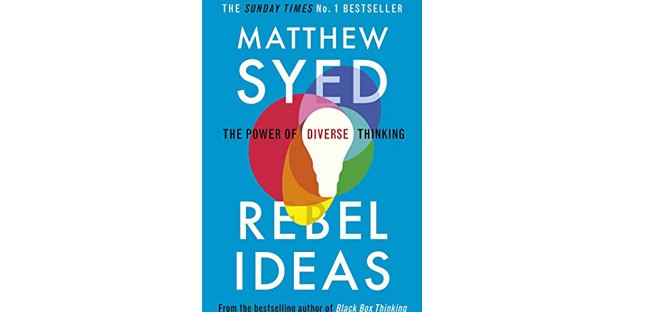Latest posts
What’s going on at parkrun?
Virtue-signalling all the way to the bank
Bud Light: brand purpose or virtue-signalling?
The Coddling of the American Mind, by Greg Lukianoff and Jonathan Haidt
Belonging, by Owen Eastwood
Such a simple thing
The Long Win, and The Scout Mindset
The Cult of We by Eliot Brown and Maureen Farrell
Coffee and covid modelling
John Lewis: so right-on it’s wrong
By theme
Marketing strategy
Insight & metrics
Innovation & inspiration
Brand & positioning
Marketing communications
Business purpose
Leadership
By industry sector
Financial services
Retail
FMCG
Technology & start-ups
Consumer services
Business to business
Other sectors
By type
Books
Comment
Quotes
Thought leadership
The business case for diversity has largely been made, as has the moral case. But has it really been believed and internalised? Here, Syed demonstrates the true impact and value of diversity, explaining how it actually works. Once you’ve read this book, you will want to seek out the right kinds of diversity for the right kinds of problems and challenges, and you’ll be able to respond convincingly to the standard objection that recruiting for diversity inevitably leads to a dilution of standards.
Always a good story-teller, Syed illustrates with enthralling examples including the CIA’s failure to anticipate 9-11 and the Mount Everest disaster that was the subject of the book and film, “Into Thin Air”. It’s not surprising that he shows the value of different knowledge bases, and different perspectives – in the Everest case, literally. But it’s also about teamwork, leadership and communication, how misleading averages can be, and how it’s not just the bees who have a hive mind. We humans have collective intelligence, in a way. Both for idea generation and for complex problem-solving, none of us is as smart as all of us. I thought I knew this but the book provides both a robust theoretical framework and plenty of real-life proof. Ever wondered why it took so long for suitcases to have wheels on? It’s here.
There’s a striking chapter on the important difference between information bubbles and echo chambers, using white supremacists in the USA to show how it’s not lack of access to opposing viewpoints but the determined dismissal of those who offer opposing views that makes echo chambers so dangerous. Think of how conspiracy theorists see all counter-data as further proof of conspiracy, or how some media outlets are dismissed wholesale as fake news.
If you think this is all a bit right-on, bear in mind that Syed is the author of Bounce, about sporting achievement, in which there is a chapter titled “Are Blacks Superior Runners?”.
Syed’s previous book, Black Box Thinking, also has much to offer for people in business. Both touch on the sources of ideas and of innovation. In this book, Syed argues for two types of innovation: incremental and recombinant. Incremental innovation comes naturally to those immersed in their sector, but this also comes with limitations. Recombinant innovation, where ideas are cross-fertilised from other sectors, is hard for those with deep-seated, sometimes not even conscious, assumptions about how things work in their business. Hence the success of disruptors from outside the sector such as Nest in thermostats, Amazon in book retailing, Apple in personal computing, and the disastrous failure of once-dominant players in their sectors like Kodak, Wang (word processors) and DEC (computing).
He’s a journalist not a consultant or trainer, so this isn’t a practical guide. It doesn’t go as far as modelling how to construct an effective diverse team, but you’ll be highly motivated to give it a try. Maybe the place to start is by sharing this book with your colleagues.
Read more on the challenges for businesses of having limited perspectives here.
Latest posts
What’s going on at parkrun?
Virtue-signalling all the way to the bank
Bud Light: brand purpose or virtue-signalling?
The Coddling of the American Mind, by Greg Lukianoff and Jonathan Haidt
Belonging, by Owen Eastwood
Such a simple thing
The Long Win, and The Scout Mindset
The Cult of We by Eliot Brown and Maureen Farrell
Coffee and covid modelling
John Lewis: so right-on it’s wrong
By theme
Marketing strategy
Insight & metrics
Innovation & inspiration
Brand & positioning
Marketing communications
Business purpose
Leadership
By industry sector
Financial services
Retail
FMCG
Technology & start-ups
Consumer services
Business to business
Other sectors
By type
Books
Comment
Quotes
Thought leadership
